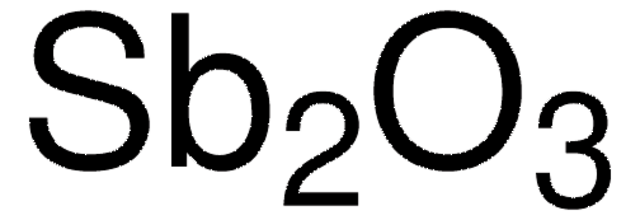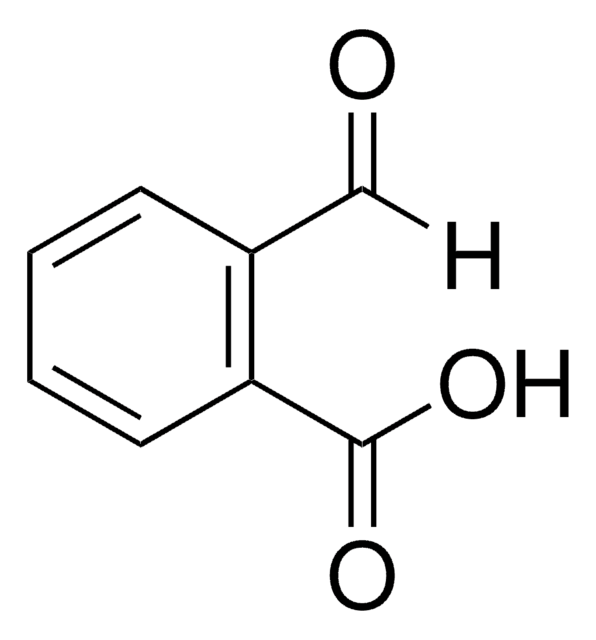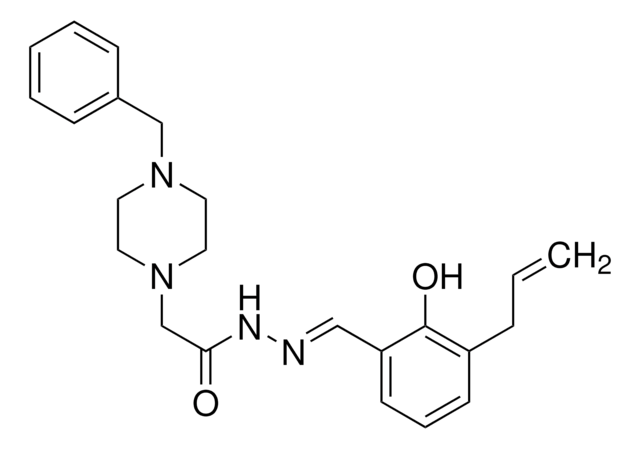229393
Aluminum chloride hydrate
99.999% trace metals basis
동의어(들):
Aluminium trichloride hydrate, Aluminum(3+) trichloride hydrate, Trichloroaluminum hydrate
로그인조직 및 계약 가격 보기
모든 사진(2)
About This Item
Linear Formula:
AlCl3·xH2O
CAS Number:
Molecular Weight:
133.34 (anhydrous basis)
EC Number:
MDL number:
UNSPSC 코드:
12352302
PubChem Substance ID:
NACRES:
NA.23
분석:
99.999% trace metals basis
양식:
crystalline
추천 제품
vapor pressure
1 mmHg ( 100 °C)
Quality Level
분석
99.999% trace metals basis
양식
crystalline
구성
Degree of hydration, 6-7
반응 적합성
reagent type: catalyst
core: aluminum
불순물
≤15.0 ppm Trace Metal Analysis
mp
100 °C (dec.) (lit.)
density
2.398 g/mL at 25 °C (lit.)
응용 분야
battery manufacturing
SMILES string
[H]O[H].Cl[Al](Cl)Cl
InChI
1S/Al.3ClH.H2O/h;3*1H;1H2/q+3;;;;/p-3
InChI key
CAYKLJBSARHIDI-UHFFFAOYSA-K
일반 설명
Aluminum chloride hydrate is a highly reactive compound that has various applications in different fields. It is commonly used as a catalyst in chemical reactions, including the polymerization of olefins and the Friedel-Crafts reactions, and is known for its Lewis acid properties.
애플리케이션
Aluminum chloride hydrate can be used as a:
- Precursor to synthesize high surface area alumina aerogels by sol-gel processing method.
- Catalyst for Friedel-Crafts alkylation of indoles.
- Dopant to synthesize Al-doped ZnO thin films by ultrasonic spray pyrolysis.
- Starting material to synthesize Boehmite nanoparticles with controlledmorphology.
신호어
Danger
유해 및 위험 성명서
Hazard Classifications
Skin Corr. 1B
Storage Class Code
8A - Combustible corrosive hazardous materials
WGK
WGK 1
Flash Point (°F)
Not applicable
Flash Point (°C)
Not applicable
이미 열람한 고객
Hongyan Sun et al.
Journal of environmental sciences (China), 82, 39-46 (2019-05-28)
In order to evaluate the influence of particle size and particle concentration on the coagulation process, two kinds of particle suspensions, nanoparticles and microparticles, were employed to investigate the effect of particle size on coagulation mechanisms with varying coagulation parameters.
Lei Gao et al.
Journal of photochemistry and photobiology. B, Biology, 177, 56-61 (2017-10-27)
A facile, convenient, and green method for the synthesis of BAgNPs by using basalin is proposed in this work. The capping of the basalin on the surface of BAgNP was confirmed by the zeta potential and FTIR findings. Further, we
Jürgen Bauer et al.
Chemical communications (Cambridge, England), 48(84), 10407-10409 (2012-09-20)
In this communication, synthesis of a rhodium alane Lewis adduct, [Cp(Me(3)P)(2)Rh→AlCl(3)], is reported. Given that direct synthesis using aluminium trichloride failed, a convenient transmetallation reaction was applied. The new MOLP was analysed by single crystal X-ray diffraction, multinuclear NMR spectroscopy
Amira Zaky et al.
BMC neuroscience, 14, 26-26 (2013-03-19)
Chronic administration of Aluminum is proposed as an environmental factor that may affect several enzymes and other biomolecules related to neurotoxicity and Alzheimer's disease (AD). APE1 a multifunctional protein, functions in DNA repair and plays a key role in cell
Dharmalingam Prakash et al.
Neuromolecular medicine, 15(1), 192-208 (2013-01-15)
Aluminum (Al) is an environmental neurotoxin that affects cerebral functions and causes health complications. However, the role of Al in arbitrating glia homeostasis and pathophysiology remains obscure. Astrocyte, microglia activation (reactive gliosis), and associated inflammatory events play a decisive role
자사의 과학자팀은 생명 과학, 재료 과학, 화학 합성, 크로마토그래피, 분석 및 기타 많은 영역을 포함한 모든 과학 분야에 경험이 있습니다..
고객지원팀으로 연락바랍니다.







